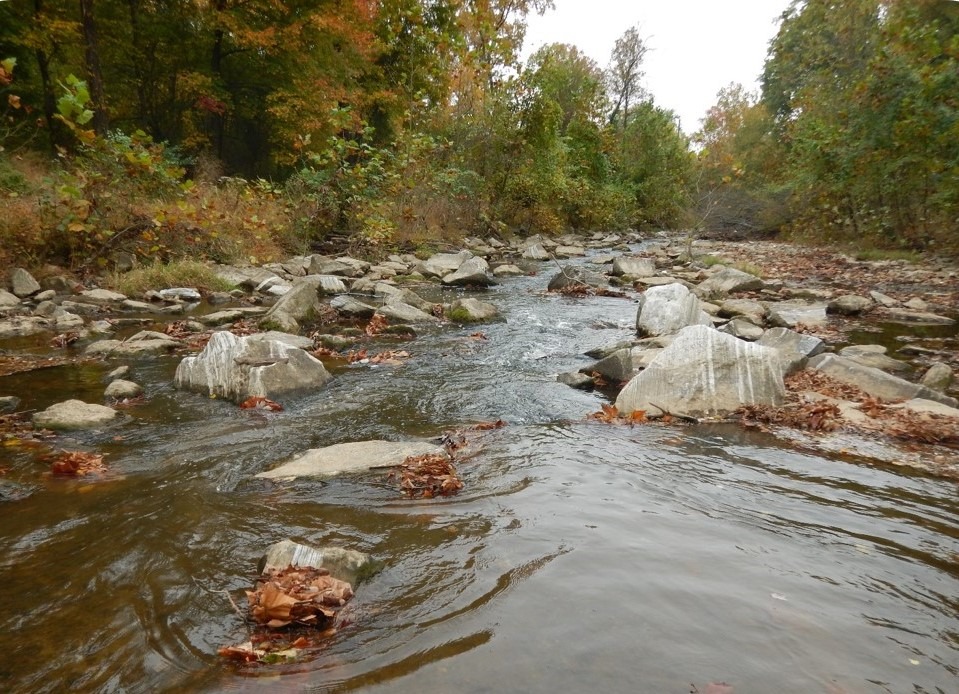| Your guide to green living in Montgomery County, MD |

Many storm drains in Montgomery County lead straight to streams, which then feed into larger streams and rivers and eventually lead to the Chesapeake Bay. We pass these storm drains every day, but we don’t take the time to think about what substances pass through them and, ultimately, how we contribute daily to the quality of the water in our watershed.
Stormwater not absorbed by soil and other pervious surfaces runs off roads, sidewalks, and lawns, picking up dirt, chemicals, and litter along the way. This water carrying waste from different surfaces is called runoff and, through the storm drains, heads straight to the nearest body of water with no treatment.
Besides litter, there are numerous less visible substances that wash into our storm drains. Gasoline and oil from cars wash off the streets. Pet waste, pesticides, herbicides, and fertilizers runoff from sidewalks and lawns. Even household cleaners and detergents not properly disposed of reach our streams.
 Trash that washes into our streams and rivers, such as plastic bottles and bags, harms local wildlife as they can swallow, choke on, or become entangled in the litter. Runoff containing gasoline, oil, cleaning chemicals, and pest management chemicals can change the chemical composition of a body of water, making it an inhospitable environment for aquatic life.
Trash that washes into our streams and rivers, such as plastic bottles and bags, harms local wildlife as they can swallow, choke on, or become entangled in the litter. Runoff containing gasoline, oil, cleaning chemicals, and pest management chemicals can change the chemical composition of a body of water, making it an inhospitable environment for aquatic life.
Runoff containing fertilizers and detergents can be especially dangerous to an aquatic ecosystem as they lead to dead zones, or areas with reduced levels of dissolved oxygen. Fertilizers contain essential nutrients, such as nitrogen and phosphorus, for plant growth and many laundry and dish detergents contain the nutrient phosphorus as well. When these excess nutrients reach our streams and rivers, they cause excess algae growth. The large algae blooms eventually die and are decomposed by bacteria that require oxygen and produce carbon dioxide in the process. This process of excess plant and algae growth, mass decomposition, and oxygen consumption is called eutrophication. A lack of dissolved oxygen in bodies of water, kills fish and aquatic plants.
To keep our bodies of water clean and our ecosystems healthy, we must be conscious of the physical and chemical waste we leave behind. The most important thing to remember is that if we do not want it in our water, it should not pass through our storm drains. We must dispose of our waste properly, reduce or eliminate the amount of harmful chemicals we apply outdoors, and educate others about reducing their eco-footprint.
Guest blog by: Emma Frank, Summer 2020 DEP Watershed Restoration intern.
Learn more at MontgomeryCountyMD.gov/Water
“many laundry and dish detergents contain the nutrient phosphorus as well.” I thought phosphorus in laundry detergents was banned in Maryland. No?
Anne, Thank you! Yes phosphorus in detergents and other cleaning products is banned in Maryland.
Well-written article and excellent description of eutrophication. It should make quite an impact on everyone who reads it!